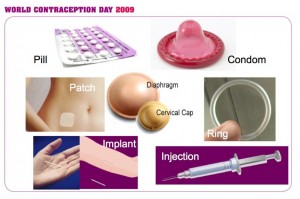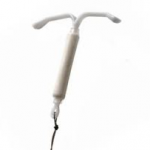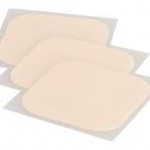There are so many different types of contraception available that you should be able to find the right method for you. But you may have to try several different things before you choose the one you like most.
We have reached the stage where unplanned pregnancies really should be rare, because of the range of good methods of birth control.
At present, there are 14 reliable ones.
What are the most popular types of contraception?
 According to the Office of National Statistics (ONS), the Pill and the condom remain the most widely used methods in Britain. Both are employed by about 25 per cent of sexually active couples.
According to the Office of National Statistics (ONS), the Pill and the condom remain the most widely used methods in Britain. Both are employed by about 25 per cent of sexually active couples.
Below is a league table of popularity among the various methods of family planning.
It’s based on the recent survey carried out by the ONS on contraception among women aged 16 to 49, plus information from the Family Planning Association. (The figures may differ very slightly from those in other tables. Even when using large samples, minor variations in results will occur.)
Table 1: League table of popularity among the various methods of family planning.
|
Rank |
Contraceptive |
| 1st equal | The Pill, including the mini-Pill – 25 per cent. |
| 1st equal | The male condom – 25 per cent. |
| 3rd | Vasectomy – 11 per cent. |
| 4th | Female sterilisation– nine per cent. |
| 5th | The coil (intra-uterine device or IUD) – four per cent. |
| 6th | Withdrawal method – four per cent. |
| 7th | Variations of the rhythm method – three per cent. |
| 8th equal | The contraceptive injection (‘the Jab’) – two per cent. |
| 8th equal | Mirena (intra-uterine system or IUS) – two per cent. |
| 10th equal | The skin patch (Evra) – one per cent. |
| 10th equal | The cap or diaphragm– one per cent. |
| 12th | The female condom – less than one per cent. |
| 13th | The vaginal ring – less than one per cent. |
This league table changes from time to time, depending on factors such as Pill scares and the introduction of new methods.
Birth Control Pills at a Glance
- Take a pill each day to prevent pregnancy
- Safe, effective, and convenient
- Easy to get with a prescription
- Cost about $15–$50 each month
Condoms at a Glance
- Worn on the penis
- Made of latex or plastic
- Prevent pregnancy and sexually transmitted infection
- Can be used with another form of birth control for extra protection
- Can be used for vaginal, anal, or oral sex
- Safe, effective, and easy to get
- Cost about $1 each, but are sometimes available for free
Vasectomy at a Glance
- Sterilization for men that prevents pregnancy
- Safe and effective
- Costs $350 to $1,000
- Meant to be permanent
Sterilization for Women at a Glance
- Surgery that prevents pregnancy
- Safe and highly effective
- Costs between $1,500 and $6,000
- Meant to be permanent
The IUD at a Glance
- Small, “T-shaped” device inserted into the uterus to prevent pregnancy
- Safe, effective, and long lasting
- Must be inserted by a health care provider
- Costs between $500 and $1,000 up front, but lasts up to 12 years
Birth Control Shot at a Glance
- A shot in the arm that prevents pregnancy
- Safe, effective, and convenient
- Easy to get with a prescription
- Lasts for three months
- Costs $35–$75 per injection, plus any exam fees
·        How Does the Birth Control Shot Work?
Like other methods of birth control, the birth control shot releases a hormone — progestin — into the body. Hormones are chemicals made in our bodies. They control how different parts of our bodies work.
The progestin in the shot works by keeping a woman’s ovaries from releasing eggs — ovulation. Pregnancy cannot happen if there is no egg to join with sperm. The progestin in the shot also prevents pregnancy by thickening a woman’s cervical mucus. The mucus blocks sperm and keeps it from joining with an egg.
The hormone also thins the lining of the uterus. In theory, this could prevent pregnancy by keeping a fertilized egg from attaching to the uterus.
Birth Control Patch at a Glance
- A small patch that sticks to your skin to prevent pregnancy
- Safe, effective, and convenient
- Easy to get with a prescription
- Costs about $15–$80 a month
The Diaphragm at a Glance
- A shallow silicone cup inserted into the vagina to prevent pregnancy
- Safe, effective, and convenient
- Lasts up to two years
- Costs about $15–$75
The Cervical Cap at a Glance
- A silicone cup inserted into the vagina to prevent pregnancy
- Safe, effective, and convenient
- Lasts for up to two years
- Costs about $60–$75
- How Does the Cervical Cap Work?
The cervical cap prevents pregnancy by keeping sperm from joining with an egg. In order to be as effective as possible, the cervical cap must be used with spermicide cream or jelly.
The cap works in two ways:
- The cervical cap blocks the opening to the uterus.
- The spermicide stops sperm from moving.



